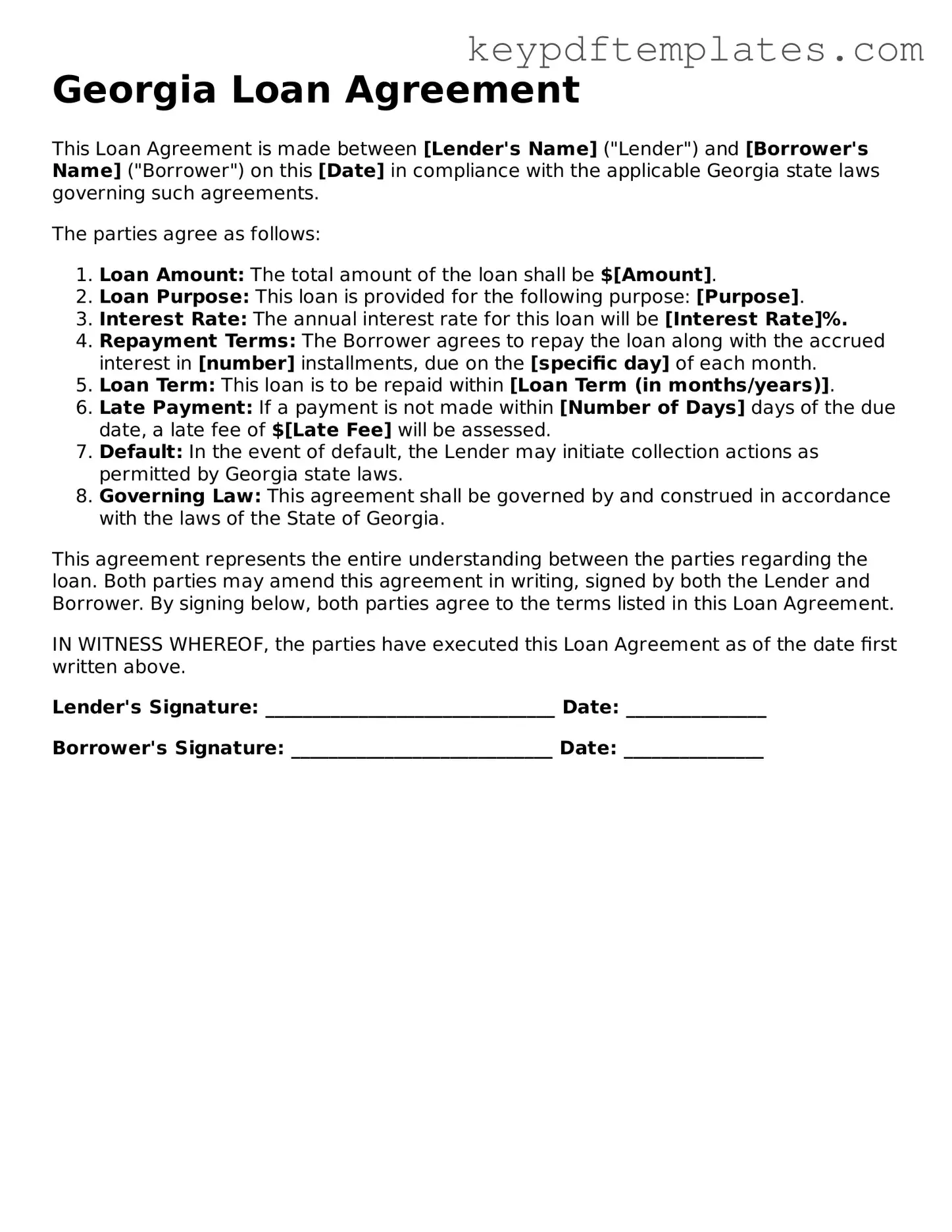Legal Loan Agreement Document for the State of Georgia
The Georgia Loan Agreement form is a legal document that outlines the terms and conditions of a loan between a lender and a borrower in the state of Georgia. This form serves to protect the interests of both parties by clearly defining the obligations and rights associated with the loan. Understanding this document is crucial for anyone entering into a lending agreement to ensure a smooth and transparent transaction.
Modify Document Online
